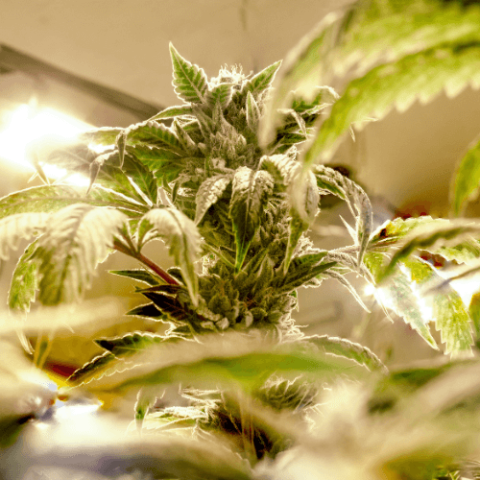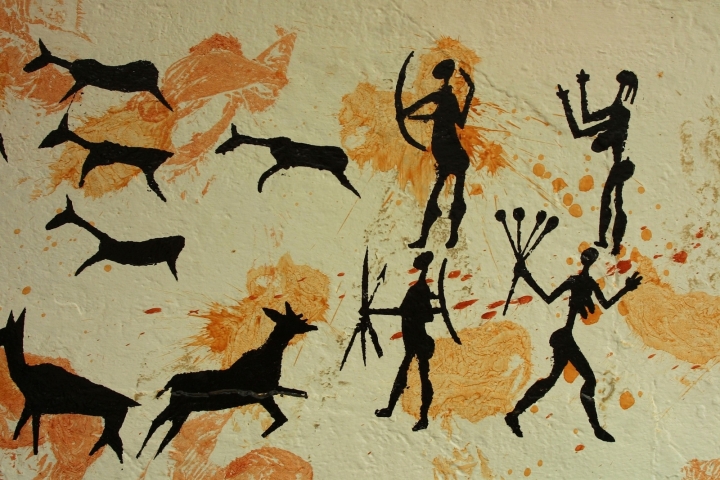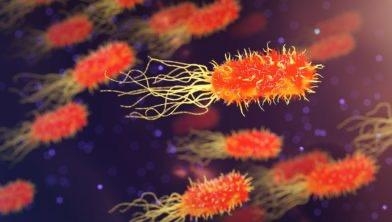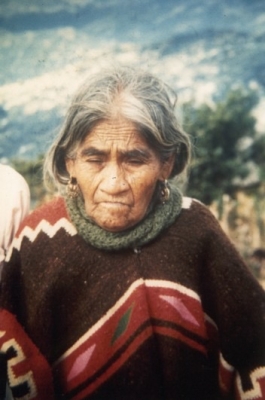The magic mushrooms of Doña María Sabina
R. Gordon Wasson was about to make the trip of his life. When he first heard about the mysterious mushrooms with which indigenous peoples in South America were gaining mystical experiences, his mission started to learn more about them. His research has been a great credit to ethnomycology, or the study of the influence mushrooms have had on social structures and culture.
His quest brought him to Doña María Sabina. This woman had been working with the powers of the psilocybe mushroom for decades. As a curandera, or medicine woman, she gave ceremonies in her small hut, where she could heal the sick. According to anthropologist Joan Halifax (1979) Doña María Sabina could be described as follows:
"For many decades she practiced her art with hallucinogenic mushrooms and many hundreds of sick and suffering people came to her little hut where they took the holy sacrament to themselves, singing in the night around the darkness of the altar".
Her reputation was great and when R. Gordon Wasson heard of her existence, he decided to visit her and traveled to the small village of Huatla de Jiminez in Mexico.
It was to be a three-year quest, in which he eventually ended up at her front door and she kindly received him and initiated him into her secret world. In 1955 he was allowed to participate in a mushroom ceremony. In 1957, a few years after his meetings with the curandera, Life Magazine published his essay, in which he told about his introduction to psilocybin.
From that moment on an entirely new culture emerged, in which mainly young Westerners went to Mexico, to be able to taste this wonderful experience as well. In this way the village of Doña María Sabina was flooded and again and again she was friendly and received them to participate in her Veladas.
Now, years later, only the memories of this special medicine woman remain.
Right now we live in a world where the interest in psychedelics has flared up again, but where there is still a lot of stigma hanging around the subject. A lot has happened and the path the psilocybe mushroom has taken is long. R. Gordon Wasson's story has ensured that 'ordinary people' like you and me can also get acquainted with this beautiful piece of Mother Nature. Thanks to R. Gordon Wasson it is also possible for westerners to grasp the extent of this ancient culture. By speaking with Doña María Sabina he got the opportunity to interview her and share her history.
Doña María Sabina: how it began
As a young girl, she was probably 8 to 9 years old, Doña María Sabina played with her sister in the woods. Under a tree she saw some beautiful mushrooms growing that she immediately recognized: they were the same ones that were used by the local curandero Juan Manuel to heal the sick. She picked some and said, "If I eat you, you and you, I know that you will make me sing beautifully. Together with her sister she ate the mushrooms slowly and she would repeat this several times in the months that followed.
Her mother sometimes saw the girl dancing and singing in front of her and then asked, "What have you done?" However, the mother always remained calm and never scolded her because she knew she could hurt her so emotionally.
One day her uncle became seriously ill. Medicine men from the area tried to cure him by giving him herbs, but nothing helped. Her uncle's condition deteriorated every day and Doña María turned to the mushrooms. They had told her that she could always ask for help when she was in need. When she was with her uncle after eating the mushrooms, she knew immediately what herbs he needed. The mushrooms told her that the herbs grew on a high lying area with very pure water. When she returned to this spot, she saw the herbs her uncle needed. In a short time he healed and from that moment on she knew that she had found her calling.
As she grew up she got more and more respect from the other villagers and soon she was seen as an honest and powerful sabia (a wise one). She healed many people and dedicated her existence to mushrooms. She was a blessing for the people in the village.
Looking for the Magic Mushroom
Very little was known about magic mushrooms at that time. Well hidden and without advertising, the medicine woman carried out her tasks.
Until one day a white man stood at her doorstep and asked her about her secrets. It is clear that R. Gordon Wasson had good intentions: it was his passion and out of great interest he wanted to learn more about this phenomenon. As so often happens, a person becomes completely fascinated by a new phenomenon. Coincidence or not, his search has brought the mushroom to the west, or rather: the west to the mushroom. The article 'Seeking the Magic Mushroom' is in fact the first trip report describing the effects of psilocybin. From the moment Life Magazine published the article, many people decided to follow the example of R. Gordon Wasson and also take a quest. For various reasons: finding god, finding the answers to questions, interest...
Although he had made an effort to protect her identity by giving her a pseudonym in the article, people soon knew of her true name and she was overwhelmed by hordes of interested people... Doctors, writers, artists, they all went to her cabin to take part in her velada.
The ceremony with Psilocybe mushrooms
The ceremony was prepared with the picking of the mushrooms. This was sometimes done by a young virgin, who only had to search with a full moon. In the night she picked the mushrooms and continued her way to the church. According to tradition she was not allowed to meet a dead animal on the path, otherwise she had to throw away the mushrooms and look for new ones. When she arrived at the church, the mushrooms were blessed to the great spirit and then they were ready for use.
María Sabina started the ceremony in the same way as other Mazatec shamans did. They chewed the mushrooms themselves first, swallowed them and then determined who could take them and what the right dosage was. The mushrooms were taken on an empty stomach and chewed very slowly. The ceremony took place at night in complete darkness, very rarely was a candlestick used. In this way, the visual effects were fully expressed. The visions one got were very clear and they were accompanied by the chants of María Sabina, using ancient texts and accompanying herself with rhythmic clapping.
Her voice created an environment of infinity and awakened the power of the mushrooms.
The magic of the mushrooms
In the words of R. Gordon Wasson, Doña María Sabina was "a woman without blemish, immaculate. She always used her powers for good and never dishonored herself by working for evil, with a rare moral and spiritual gift. She was devoted to her vocation." (Wasson 1980). By many, the medicine woman was in fact seen as a saint. Even the local church considered her work noble and saw how she cured many sick people.
R. Gordon Wasson, and after him many others, did not come to her because of illness, but out of curiosity. This difference was palpable to the medicine woman and over time she felt her powers diminish. It was as if her energy slowly faded away. R. Gordon Wasson writes later that he regretted the published article. Because of the furious enthusiasm of the readers and the many queests that followed, the hut of Doña María Sabina was trampled with various souls. The ethnomycologist has always been respectful and had no evil intentions, yet his actions caused a dramatic turn in the interaction between the woman and the mushrooms. Should he have curbed his curiosity and left the magic of the mushrooms alone? Perhaps we will never know and it is especially important to reflect on our own experiences with psilocybin and how we can treat it with respect.
Did you enjoy reading this article and do you like to write yourself? We are always looking for people who share our passion for natural products, who can also translate this into great texts. And we have an interesting reward for this. View all information for writers.
Spore Syringe Cambodia
Psilocybe Cubensis New in our product range Blog Organic Cannabis Growing
Cannabis cultivation in Germany: A beginner's guide
Welcome to our guide on growing cannabis in Germany for beginners! The cultivation of cannabis in the Federal Republic of Germany has been introduced [..]
29-03-2021
7 minutes
Blog Organic Cannabis Growing
Cannabis cultivation in Germany: A beginner's guide
Welcome to our guide on growing cannabis in Germany for beginners! The cultivation of cannabis in the Federal Republic of Germany has been introduced [..]
29-03-2021
7 minutes
 Blog Smart Products
Smartshop products for a productive day
Whether you're a student, teacher, warehouse worker or forester, I suspect you like to have a productive day where you realize what "needs&qu [..]
17-08-2020
7 minutes
Blog Smart Products
Smartshop products for a productive day
Whether you're a student, teacher, warehouse worker or forester, I suspect you like to have a productive day where you realize what "needs&qu [..]
17-08-2020
7 minutes
 Blog Health
Gut Flora: Living Nutrition for a healthy body
Bacteria are everywhere, in and on your body, your clothes, your pets, the roots of plants ... Although many people still get shivers at the thought, [..]
Blog Health
Gut Flora: Living Nutrition for a healthy body
Bacteria are everywhere, in and on your body, your clothes, your pets, the roots of plants ... Although many people still get shivers at the thought, [..]













 Nederlands
Nederlands Italiano
Italiano Deutsch
Deutsch Français
Français Português
Português Español
Español Polski
Polski